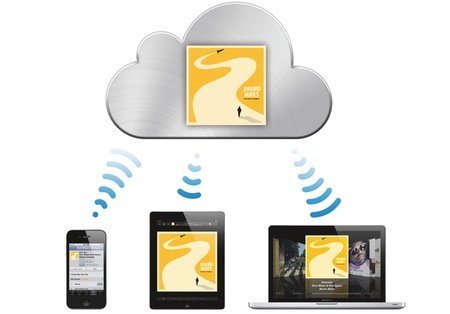Originally published on June 14, 2011 in our free BigLaw newsletter. Instead of reading BigLaw here after the fact, sign up now to receive future issues in realtime.
Last week Apple hosted its annual World Wide Developers Conference (WWDC) in San Francisco. WWDC enables developers to learn from Apple engineers, but is best known for the opening day "Keynote" at which Steve Jobs and his team usually unveil the next version of iOS, which powers the iPhone and iPad. Last week, Jobs and his team announced not only iOS 5, but also iCloud. iCloud in particular holds great promise for large law firms.
Always Be in Sync Without Syncing
iCloud essentially serves as a central repository for your data. It sends that data to all of your Apple devices — computers, smartphones, and tablets — plus Windows PCs. Both Mac OS X Lion and iOS 5 will take advantage of the estimated 12 petabytes (a petabyte is one million gigabytes) of storage located in Apple's new $1 billion 500,000 square foot North Carolina server farm.
While iCloud makes for fun water cooler conversations for the average technophile like me, what does it mean for you and the "normal" lawyers at your firm? In short, it means always having your work in sync, no matter where you are or what device you're using — all without having to do anything such as sync.
Although Steve Jobs' keynote address focused primarily on using iCloud for music, photography, and word processing applications, iCloud's reach is far more extensive. Jobs alluded to the use of iCloud for storing two significant types of data — documents and key value data.
Regarding documents, the concept is easy to understand. If you create a document on your iPhone, it will be sent up to iCloud and then wirelessly "pushed" to all of your other devices such as your iPad, Mac, and Windows PC. You need not do anything because, as Jobs put it "iCloud is integrated with your apps, everything happens automatically … it just works."
Key value data is best described as user information (e.g., the appointments in your calendar) that doesn't reside in a single contained "document." The storage of key value data is significant in iCloud because it enables developers to transfer information and settings among all of a user's devices without requiring the developer to invest in their own expensive data server.
Until now, this issue has been a major impediment to small-time developers like me as well as law firms that develop their own enterprise apps.
Now, for example, I can incorporate iCloud storage and syncing into my Court Days Pro app, enabling lawyers to sync their litigation calendaring information and settings on all of their devices without me having to purchase and maintain a costly server. Apple not only provides the infrastructure and storage for iCloud at no charge (up to 5 GB per user), but also provides the software programming tools (called APIs) so that developers can easily incorporate the service into their apps.
What About Dropbox and Other Cloud Services?
Other services such as Dropbox (which I covered in BigLaw earlier this year) offer cloud storage and syncing of documents across multiple devices. However, as good as Dropbox is, it is not incorporated into the underlying operating system of the device and, therefore, requires quite a bit of effort by developers to effectively implement the service into their applications. GoodReader is an example of a document reading app that does a good job incorporating Dropbox.
iCloud seems like it may solve many of the problems associated with implementing cloud storage and document syncing in a lawyer's daily workflow. If I take notes at a court hearing, I want those notes on my desktop computer instantaneously so that I can work on them as soon as I return to my office. Likewise, if I revise a letter on my desktop word processor, I want those changes on my iPad. If I scan a document with my iPhone's camera, I want it seamlessly uploaded to my PC. And I want all of this done without me having to click or touch any buttons.
That's the idea behind iCloud. It's now up to developers to put this functionality into the legal and other apps on which your law firms relies.
Written by Dan Friedlander of LawOnMyPhone.com.
How to Receive BigLaw
Many large firms have good reputations for their work and bad reputations as places to work. Why? Answering this question requires digging up some dirt, but we do with the best of intentions. Published first via email newsletter and later here on our blog, BigLaw analyzes the business practices, marketing strategies, and technologies used by the country's biggest law firms in an effort to unearth best and worst practices. The BigLaw newsletter is free so don't miss the next issue. Please subscribe now.













